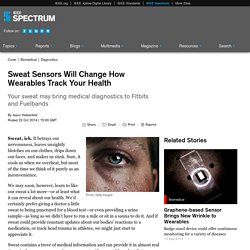

Fitness health. 907 × 707 - live-graph.org 921 × 736 - support.sas.com 2000 × 1500 - en.wikipedia.org 1469 × 1292 - deducer.org.

Sticking yourself in the finger day after day: For many diabetics, this means of checking blood glucose is an everyday part of life.

Especially for patients with Type-1 diabetes, who always have to keep a close eye on their levels, since their bodies are incapable of producing the insulin to break down the glucose in the blood. Several times a day, they have to place a tiny drop of blood on a test strip. It is the only way they can ascertain the blood glucose value, so they can inject the correct amount of insulin needed. And this pricking is not only a burdensome: it may also cause inflammation or cornification of the skin. And for pain-sensitive patients, the procedure is agony. The daily sticking of the finger may soon become a thing of the past, thanks to a diagnostic system with Fraunhofer technology built-in. Diagnostic system in miniature The principle of measurement involves an electrochemical reaction that is activated with the aid of an enzyme.
Durable biosensor. A new sweat meter developed at University of Oslo and the National Hospital of Norway may provide diabetics a non-invasive way to detect low blood sugar levels.

There’s a noticeable change in sweat patterns when blood glucose approaches dangerously low levels, hence there is hope that the new technology will be sensitive enough to become a preemptive tool to avoid clinically significant hypoglycemia. The researchers are now preparing for clinical testing of the new devices on diabetic patients, and other groups are finding use for the sweat sensors for studying kids with chronic fatigue syndrome and night sweats. From the announcement: The sweat meter sends a small electrical current through the outer part of the skin, into the sweat glands and out onto the surface again. This layer of skin, which consists of dead horn cells, is as thin as the plastic film you use to wrap food, only 10 to 15 micrometers thick. Sweat, ick.

It betrays our nervousness, leaves unsightly blotches on our clothes, drips down our faces, and makes us stink. Sure, it cools us when we overheat, but most of the time we think of it purely as an inconvenience. We may soon, however, learn to like our sweat a lot more—or at least what it can reveal about our health. We’d certainly prefer giving a doctor a little sweat to being punctured for a blood test—or even providing a urine sample—as long as we didn’t have to run a mile or sit in a sauna to do it. And if sweat could provide constant updates about our bodies’ reactions to a medication, or track head trauma in athletes, we might just start to appreciate it. Sweat contains a trove of medical information and can provide it in almost real time. Using sweat to diagnose disease is not new.
That’s about to change. My group at the University of Cincinnati, working with Joshua Hagen and other scientists at the U.S. That’s how we can find out how much salt is in sweat. Twitter helps you stop smoking. In the world of insulation, seldom things are more heatedly debated than which type of insulation is better: fiberglass insulation or cellulose insulation.

Both have their strengths and weaknesses, so let's see what all the fuss is about. In order to fairly compare the two types of insulation, you have to consider all of the qualities the best insulation should do. This includes things like: Increase the level of energy efficiency of your home Reduce the risk of fire Limit the amount of sound that passes through your walls and ceilings. Increase Energy Efficiency Increasing Energy Efficiency is such a vague concept. Define the overall energy efficiency of your home with the amount you spend each month to keep your home at a comfortable temperature or your heating and cooling bills.
This is a better criteria to use than simply stating R-values because this is where the real differences between fiberglass and cellulose insulation are obvious.